In our relatively small (80’x180′) yard, our goal is to provide habitat for creatures “smaller than a breadbox”: pollinators, birds, butterflies, and amphibians, along with all the tiniest creatures we rarely notice, such as those found in healthy soil or in the compost pile.
Not only do we find smaller creatures interesting, but we believe they’re more suitable inhabitants of urban/suburban areas like ours.
Not many mammals fall into this category.
Conversely, we believe that humans need to be smarter about how and where we build our communities so that we leave more areas wild for larger creatures — and for people to enjoy wildlife in more appropriate settings.
Below are a few “smaller than a breadbox” mammals that we do welcome to our yard — bats, chipmunks, and shrews — and a few that we accept as urban animals — skunks and raccoons. Pets, of course, are in a separate category.
And then there are the squirrels and deer.
Bats
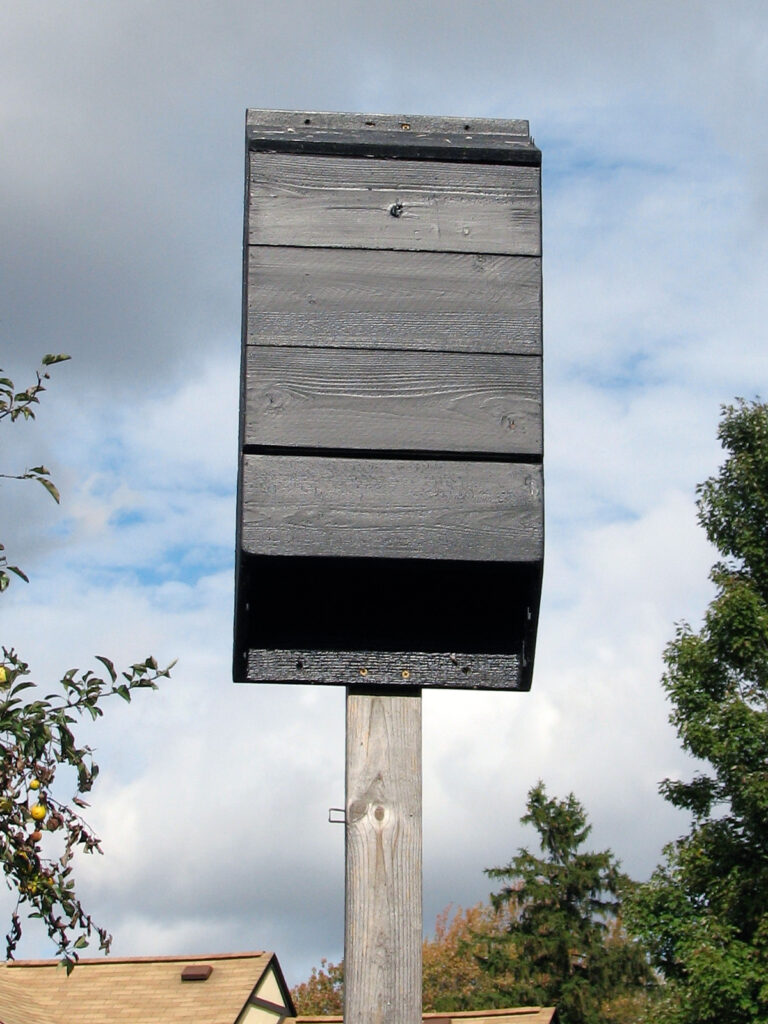
We really would like to have bats in our yard. We put up this bat house a number of years ago, painting it black as is recommended for our region since bats like it warm. (Bat houses farther south should be painted a different color.) However, we never had any luck.
It could be that we mounted it too low. It needs to be high enough so bats can drop out of the bottom of the house and have enough room to start flying. We initially had mounted it higher, but it swayed too much in the wind.
More likely, though, is that the bat population in the Northeast has been so devastated by White-Nose Syndrome that there just aren’t many bats around. We haven’t seen any flying around at night. This is a real loss.
We finally gave up and took it down. We repainted it a lighter color (according to the Bat Conservation guidelines) and put it on our son’s land in North Carolina.
- Learn more:
- Bat Conservation International:
- Bat Conservation Int’l has many great resources (one of our favorite charities!)
- Guide to gardening for bats
- North American State of the Bats
- Bat gardens and houses
- On the brink of extinction
- Bats vs. Birds – How they’re different
- Moths, It’s what’s for dinner
- VIDEO: All about bat houses
- NYS DEC Conservationist: Bats of New York
- NYS DEC: Little Brown Bat
- SUNY ESF: Little brown bat
- USDA NRCS: Celebrating bat to the bone ecosystem services
- Massachusetts Audubon: About bats – includes links to lots of info
- Beyond Pesticides: Bat losses costing American farmers half a billion dollars
- NY Times:
- Washington Post:
- The Humane Gardener:
- Chautauqua Institution:
- In making plans for Amp, Chautauqua goes to bat for bats – We used to attend Chautauqua in the summers, and even though it’s next to a lake, there are few mosquitoes thanks to bats — affectionately called “Chautauqua butterflies.”
- VIDEO: Bats at Chautauqua – Bats found at Chautauqua Institution, and why they should be appreciated. We’ve heard this wonderful talk ourselves!
- Penn State Extension:
- Bat Conservation International:
Chipmunks
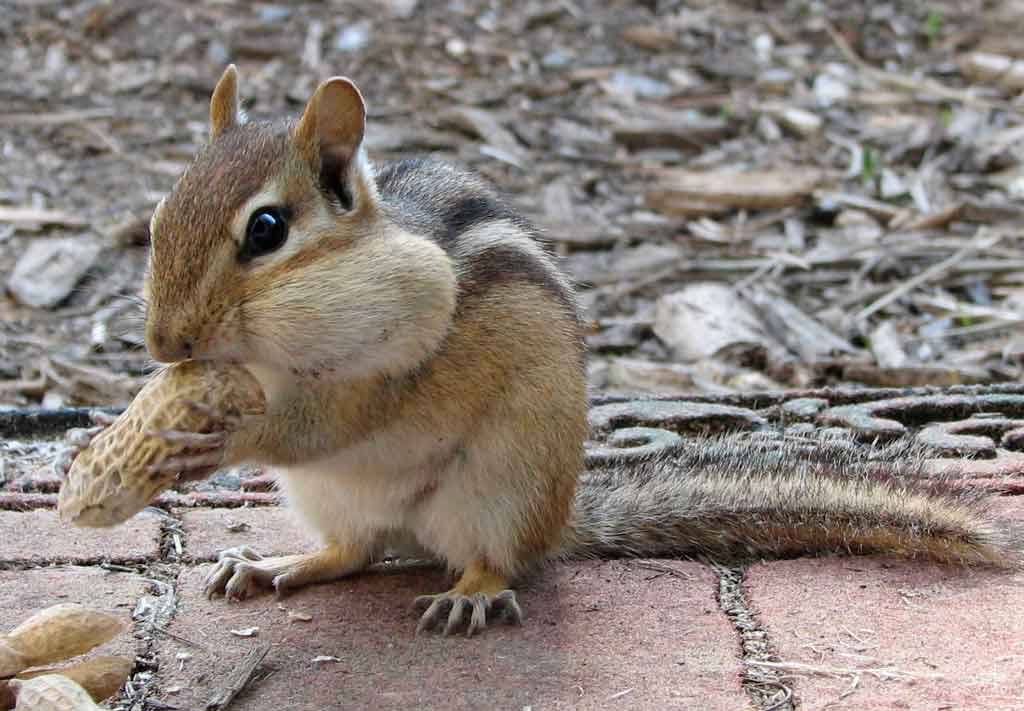
We do enjoy chipmunks, whom we sometimes indulge with peanuts. They’re just too cute.
It’s hard to believe such a small creature could really eat as many peanuts as they cart away in their cheek pouches, but I guess it’s better to provision your warren with too much than with too little. At least he doesn’t require peanuts all winter, though he sometimes makes a brief appearance during a January thaw.
I guess one reason people might not appreciate chipmunks is that they create holes in the lawn as entrances to their burrows or perhaps because they eat their tulip bulbs.
Since we worship neither lawns nor tulip bulbs, it’s not a problem for us. When we find a hole (such as the one in the photo) that’s in a path where people could conceivably trip, we simply put one of our plastic tables over the hole to protect both the hole and people. Live and let live!
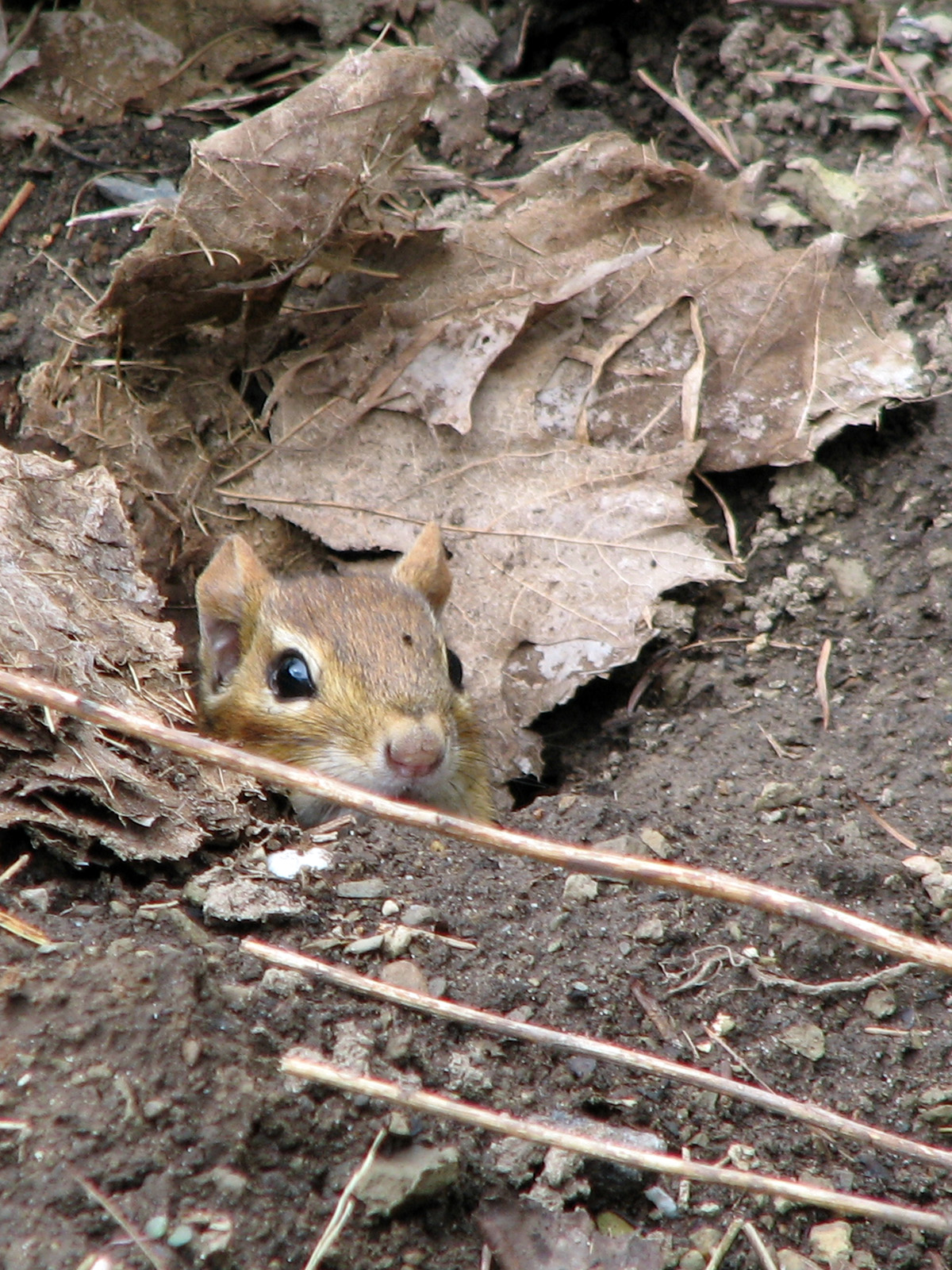
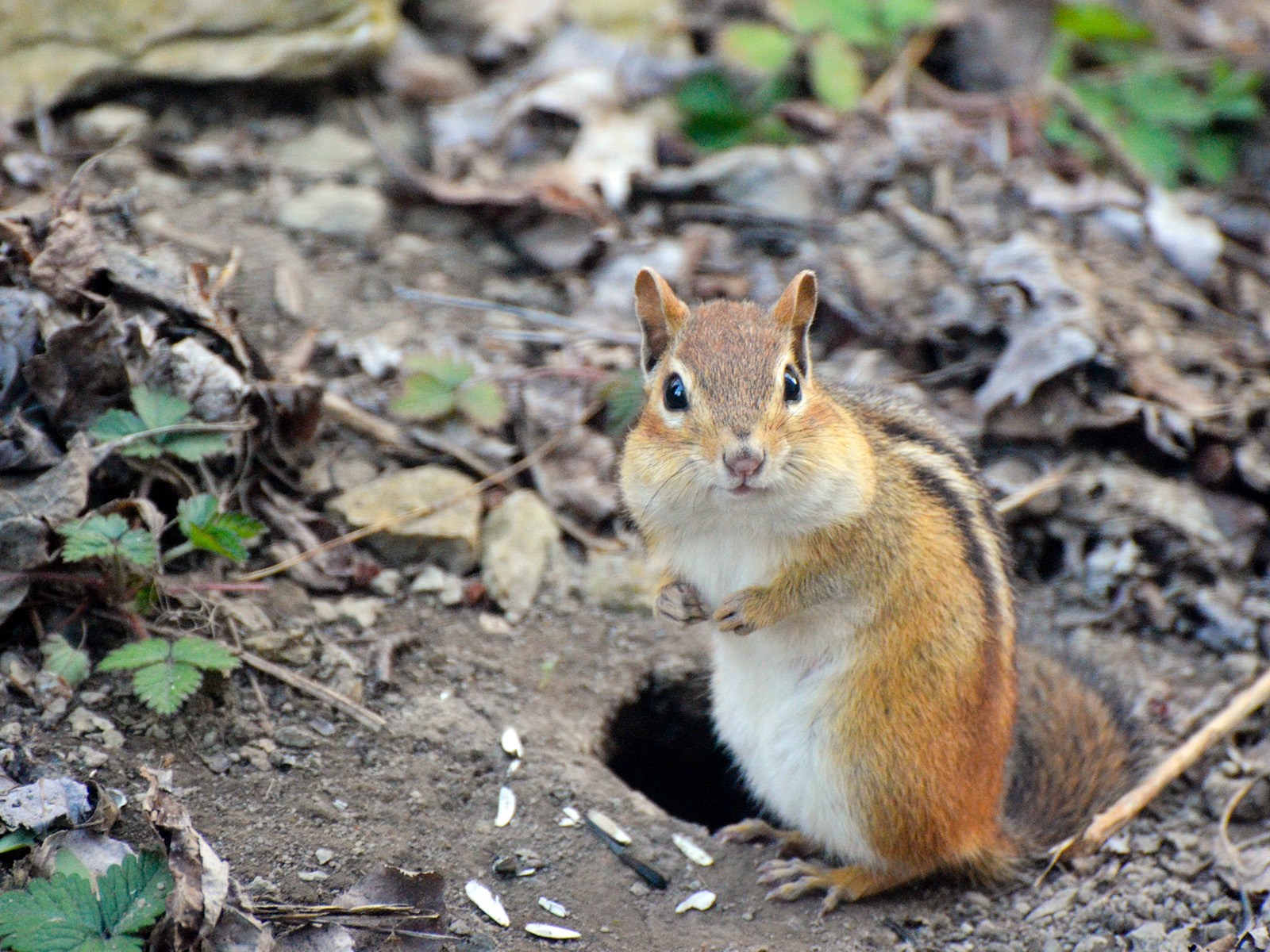
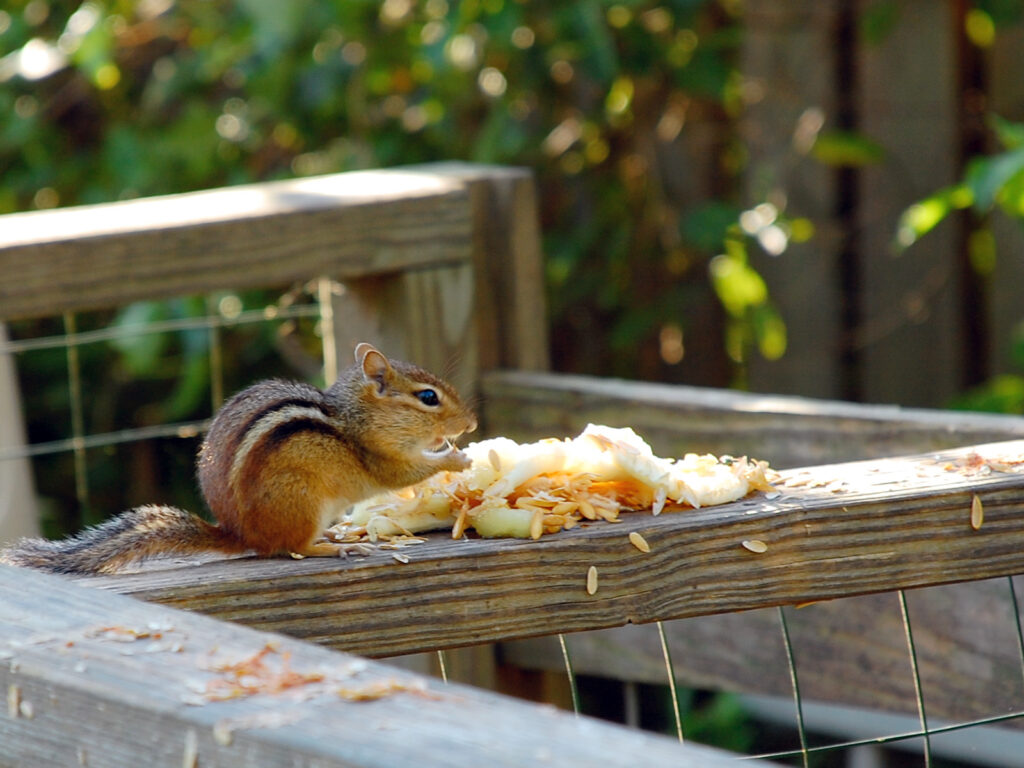
Chipmunks also like cantaloupe seeds, which we put out on the composter. Cardinals — and unfortunately squirrels — also like them.
- Learn more:
- Massachusetts Audubon Living with Wildlife: Chipmunks – a nice fact sheet about this fascinating little creature
- SUNY-ESF: Eastern chipmunk – Nice summary, including a diagram of its burrow
- PBS Nature:(You may need a PBS Passport to access or check at your public library)
Rabbits
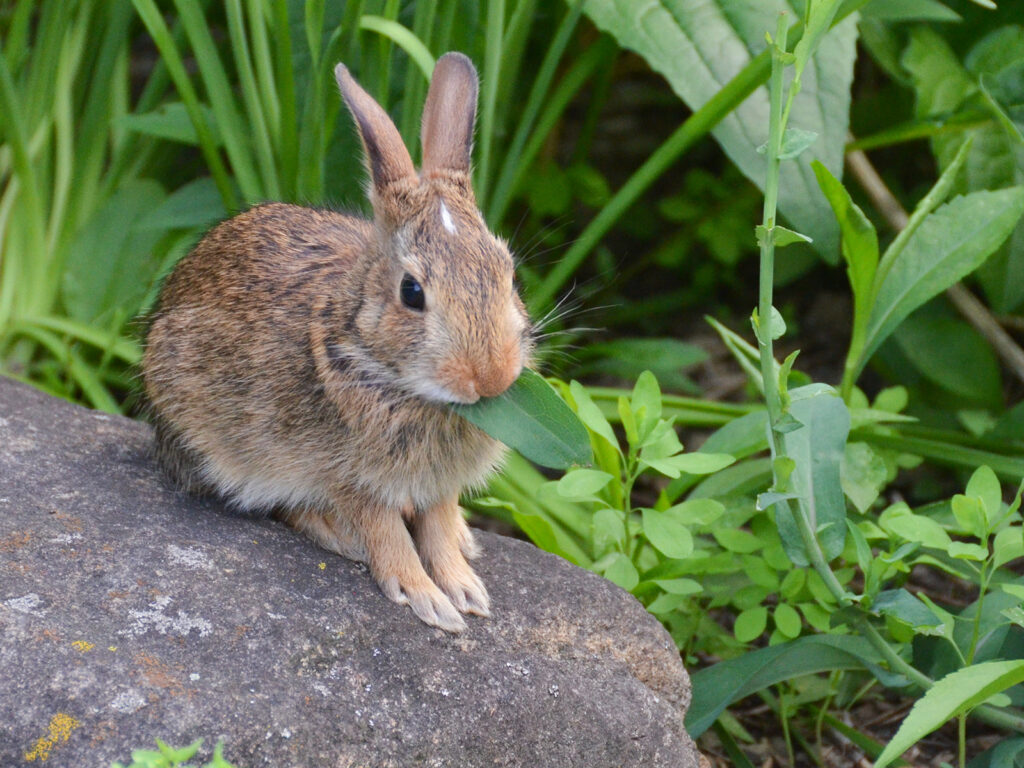
We’ve had a rabbit in the yard for the last few years. In the past, we had just one rabbit, which overwintered and reappeared in the spring. We didn’t see that one this year (2020), but we do now have a baby bunny and its sibling.
I’ve been told that the white spot on its forehead indicates it’s still nursing? Not sure…
Sadly, after living peacefully in our yard all summer (2022), we discovered that it had died. We can’t figure out what happened since it didn’t have any visible wounds. Maybe pesticides in the neighborhood? RIP little bunny! We hope another little bunny finds our yard next summer.
- Learn more:
- The Humane Gardener: Gardening with rabbits
- Choose Natives: Virginia’s rabbit-proof native plants
- PennState Extension: Managing habitat for cottontails
Shrews / Moles / Voles / Mice
These little creatures have scurried around in paths they’ve established in the yard. They (or their descendants) have been using these same paths for years now, and it’s fun to catch a glimpse of them now and then.

I think we have shrews, but they may be moles or voles. Or maybe we have some of each?
Shrews seem to be benign creatures (though it wouldn’t be a good idea to handle them).
We haven’t noticed any damage, and we don’t consider them to be a problem. In fact, this mostly carnivorous mammal may reduce our population of snails and even mice.
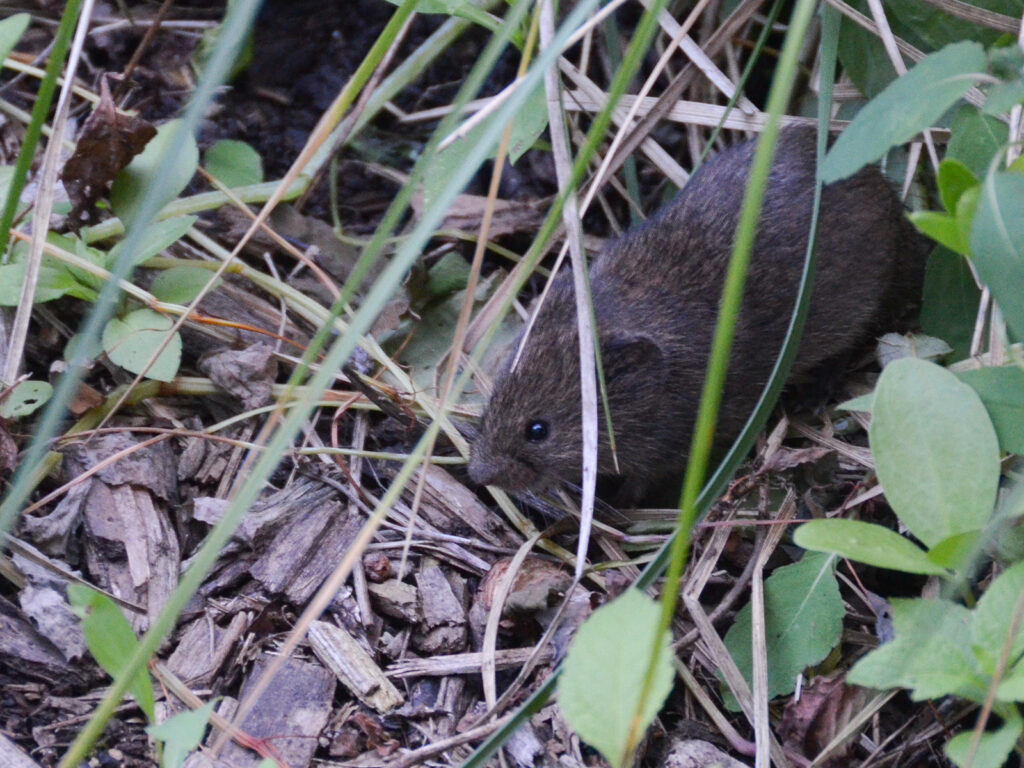
I saw this creature near our wildlife pond. Since it looks like a chubby mouse, this is probably a vole, calmly chewing a leaf as I took its picture.
Voles (starting with “v”) are vegetarians, so they eat plants, but we haven’t found them to be a problem. We have lots of plants!
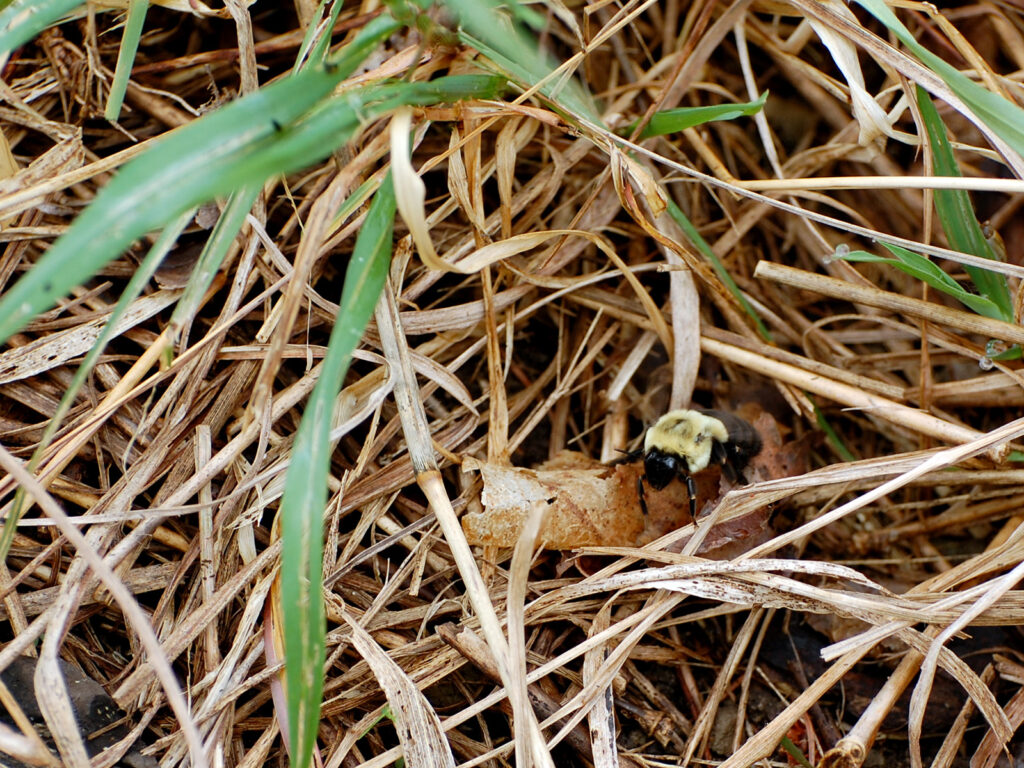
We especially enjoy watching our shrews/moles/voles scurry across the path between the meadow and the native grass area.
We suspect that their previous homes in our native grass area were subsequently used by bumblebees, which often nest where rodents had created burrows.
And, of course, regular old mice. They’re cute (but I appreciate them more when they stay outside)!
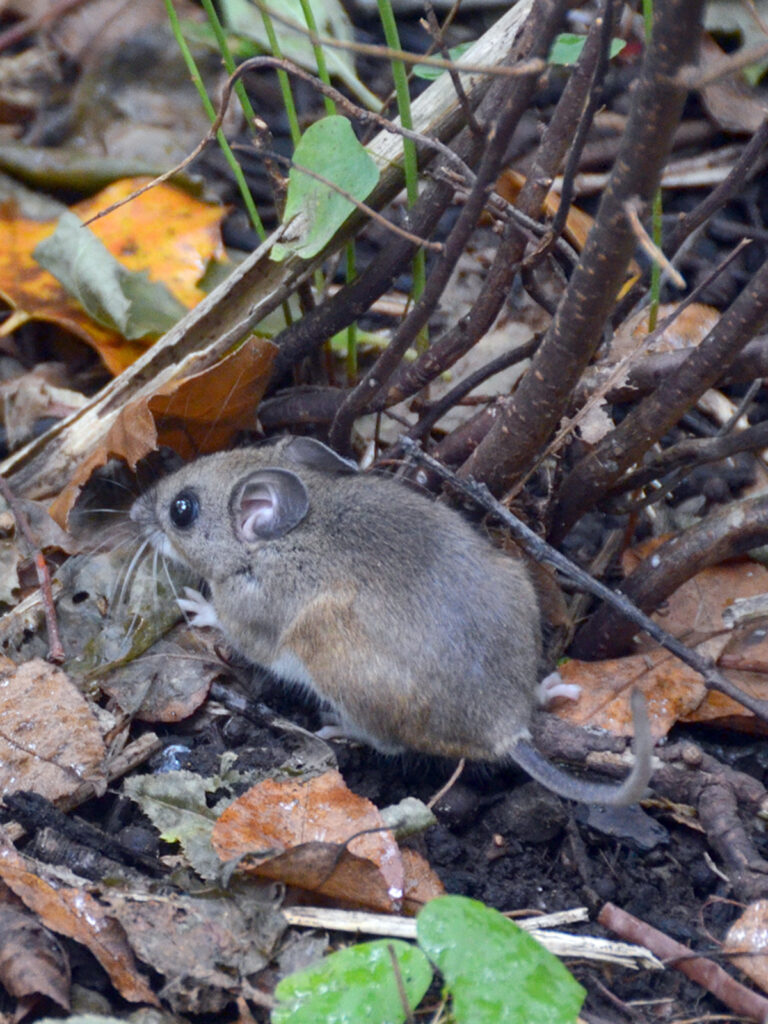
- Learn more:
- SUNY-ESF: Short-tailed Shrew
- Urban Habitat: Short-tailed Shrew
- Humane Society: Small but mighty: Little mammals play a big role in healthy gardens
- The Humane Gardener: Moles: Underground wonders
- New York Times: Meet the mice who make the forest
Opossums

One day I was walking on our path in the front yard and came face to face with a opossum! I had never seen this nocturnal animal here before, and I haven’t ever seen one again, though I guess they’re probably around at night. I managed to get its photo, then did some research.
It turns out that they’re quite benign and actually beneficial. They’re typically not aggressive, and its sometimes snarling behavior is just one of its harmless defenses, as is “playing dead.”
They have one of the lowest risks of developing or spreading rabies, and as the Nat’l Wildlife Fed’n says, they’re an unsung hero in the fight against ticks, killing them in the process of their fastiduous grooming. (See Resources below for more info)
- Learn more:
- National Wildlife Federation:
- Opposums – Unsung heroes in the fight against ticks and Lyme disease
- Give opossums a break – Why it makes sense to make way for opossums
- Cool Green Science: Strange and surprising facts about opossums
- Wildlife Medical Clinic at Illinois:The Helpful Opossum
- Humane Society: What to do about opossums
- National Wildlife Federation:
Skunks
Skunks can just be considered typical urban animals, I guess.
We rarely see them since they’re nocturnal, but we know they’re around. They don’t seem to cause any harm. In fact, the skunk’s small diggings indicate it’s looking for grubs, which helps keep Japanese beetles under control.
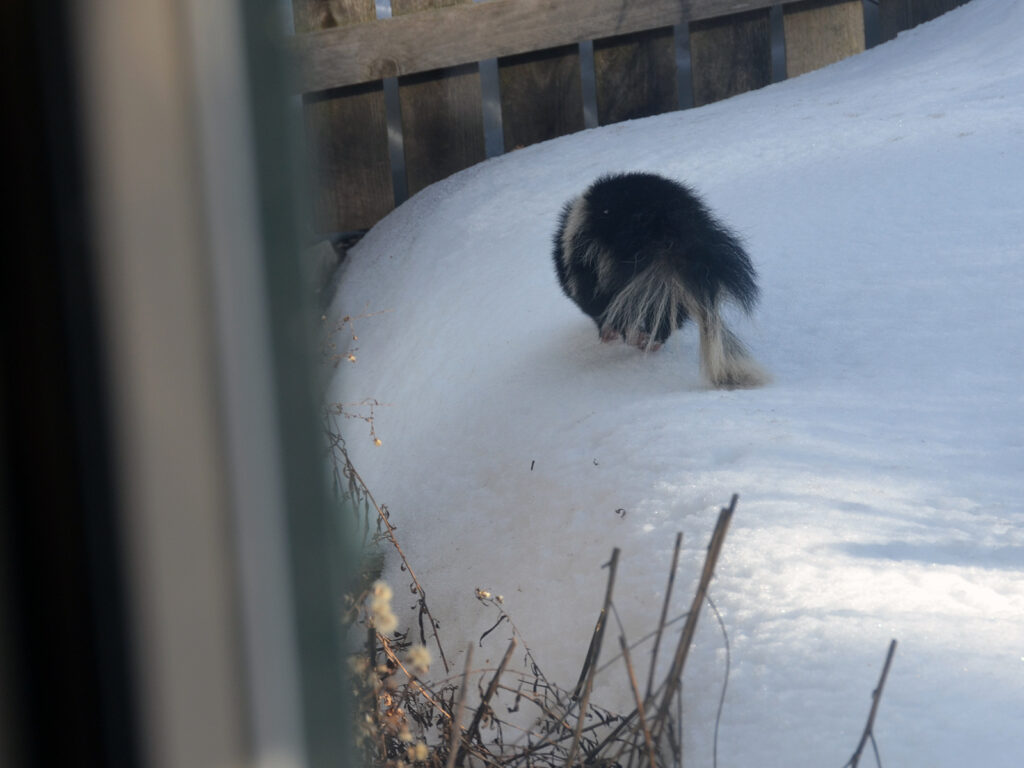
One thing we’ve done, though, is to have a hardware cloth barrier installed around the bottoms of our porches and shed so they aren’t nesting under our house or shed too close for comfort.
- Learn more:
- The Humane Gardener: Skunks: Better than pesticides
- Cool Green Science: How to remove skunk scent (and no, it’s not tomato juice)
Groundhogs (aka woodchucks)
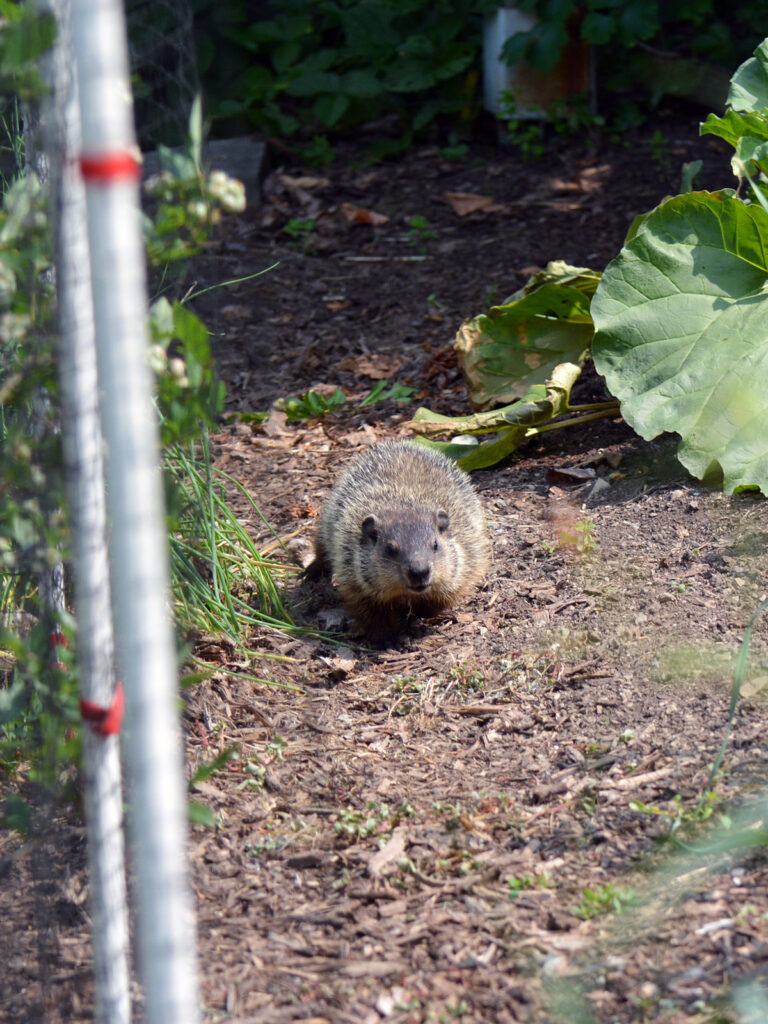
Groundhogs/woodchucks are a different story. Although the generally beneficial skunks (at least in the wild) depend on woodchuck holes for living quarters, woodchucks in our yard are a problem.
It’s hard to coexist with them because they can quickly lay waste to our edible garden, totally wiping out the food we worked so hard to grow for ourselves.
We’ve found a solution that so far has worked: a fence around the garden with a floppy top that groundhogs can’t climb.
- Learn more:
- The Humane Gardener: The hallowed groundhog
Raccoons
I’m not so keen on raccoons. We rarely see these nocturnal mammals, but they probably are around.
They can be aggressive, and we don’t encourage them, though there’s not much we can do.
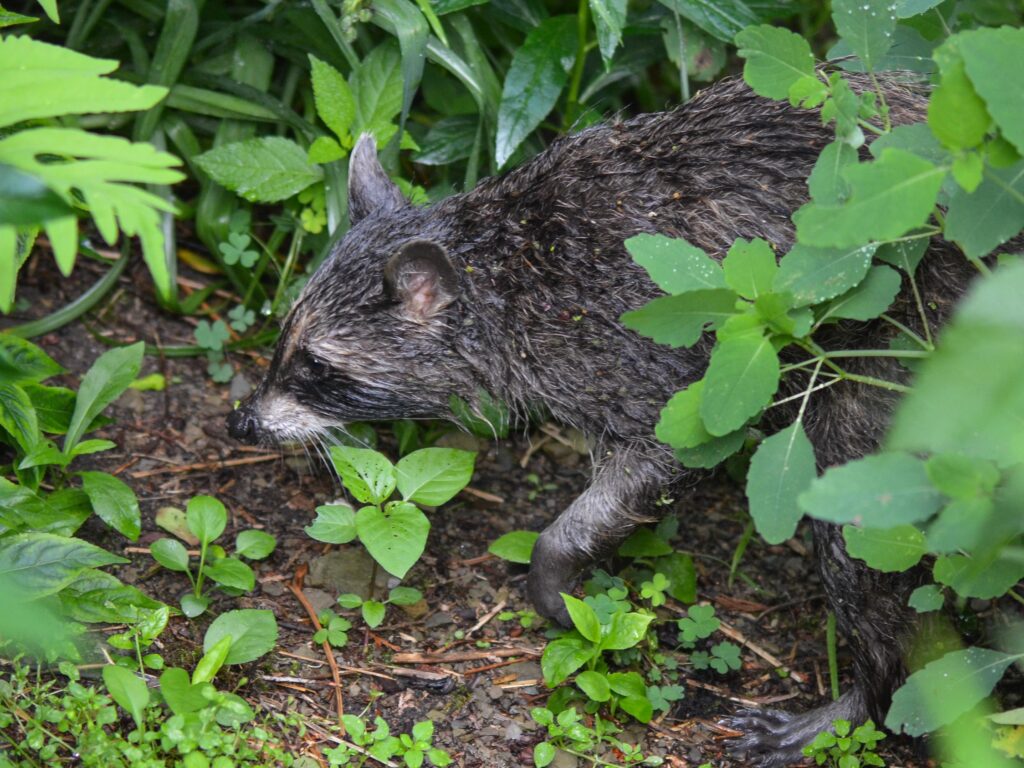
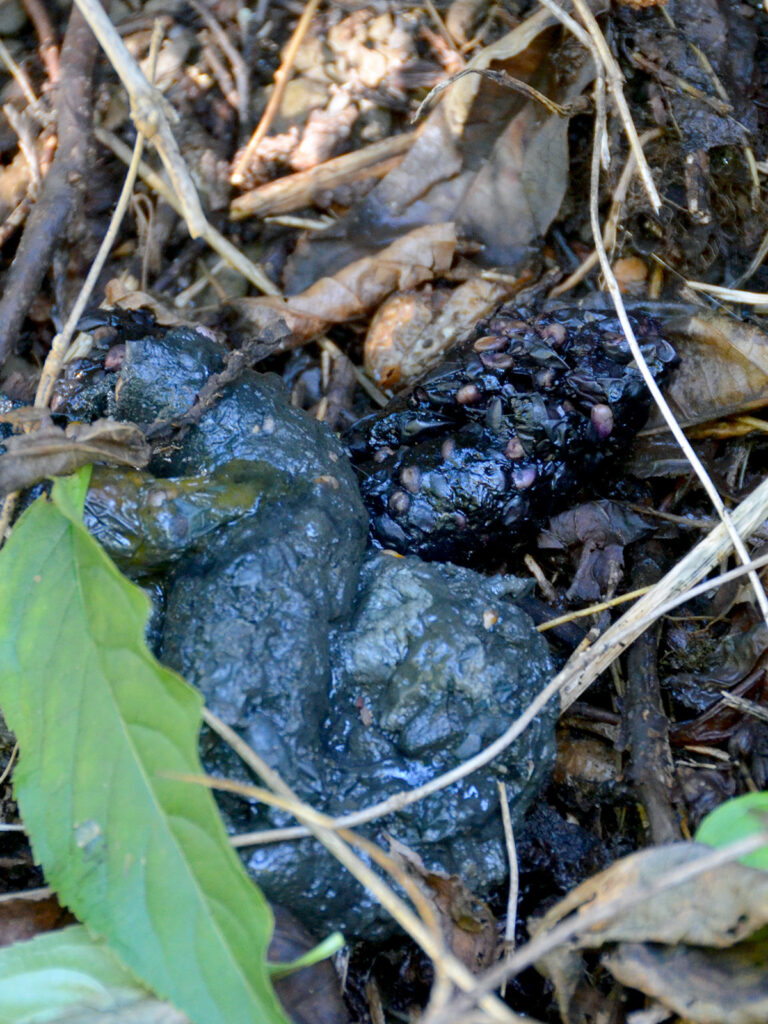
I discovered this rather large dropping (on the order of 5-6 inches!) near our wildlife pond.
It appears to be raccoon scat from web descriptions. I also learned that someone (braver than me) had dissected one and found that it included multiple parts of dragonflies. That could explain why there has a decline in the number of dragonflies I’ve had over the last few years (though it could also be from the springtime visits of mallards feeding on dragonfly larvae living at the bottom of our ponds).
Pets: Cats and dogs
I think that sometimes having a pet may satisfy human’s need to connect with non-human creatures and thus supplant their interest in connecting with the lives of wild creatures, but this doesn’t have be the case.
Domestic cats are not native! They’re a menace to our habitat garden.
I don’t argue with people wanting cats as indoor pets (I grew up with pet cats) but they should be kept INSIDE!
Why should they be allowed to roam the neighborhood, using other people’s yards as hunting grounds and as their personal bathrooms?
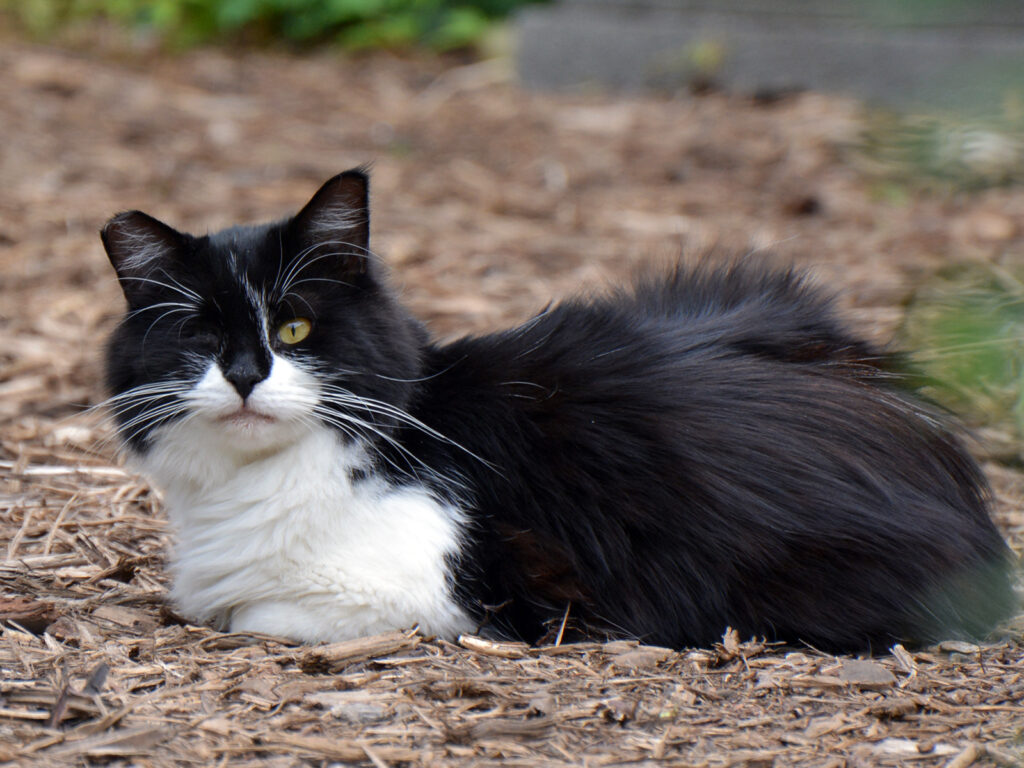
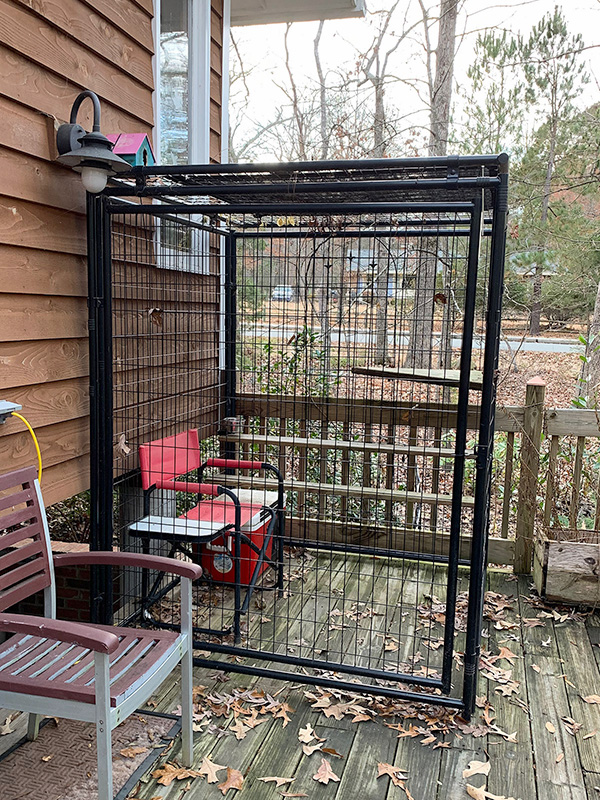
The easy solution: A “catio”!
Here’s one example I saw at someone’s house, but there are other examples in the Resources section below.
Many of them are larger — even “rooms” in the back yard where people can share the space with their cat.
Dogs on the other hand — at least in our community — are leashed and so they’re never in our yard uninvited. And owners pick up their poops! (How’s that for social change!)
We used to have a dog, but Sheena never chased anything and didn’t cause any problems in the yard, though that was before we had created a habitat garden or had installed ponds.
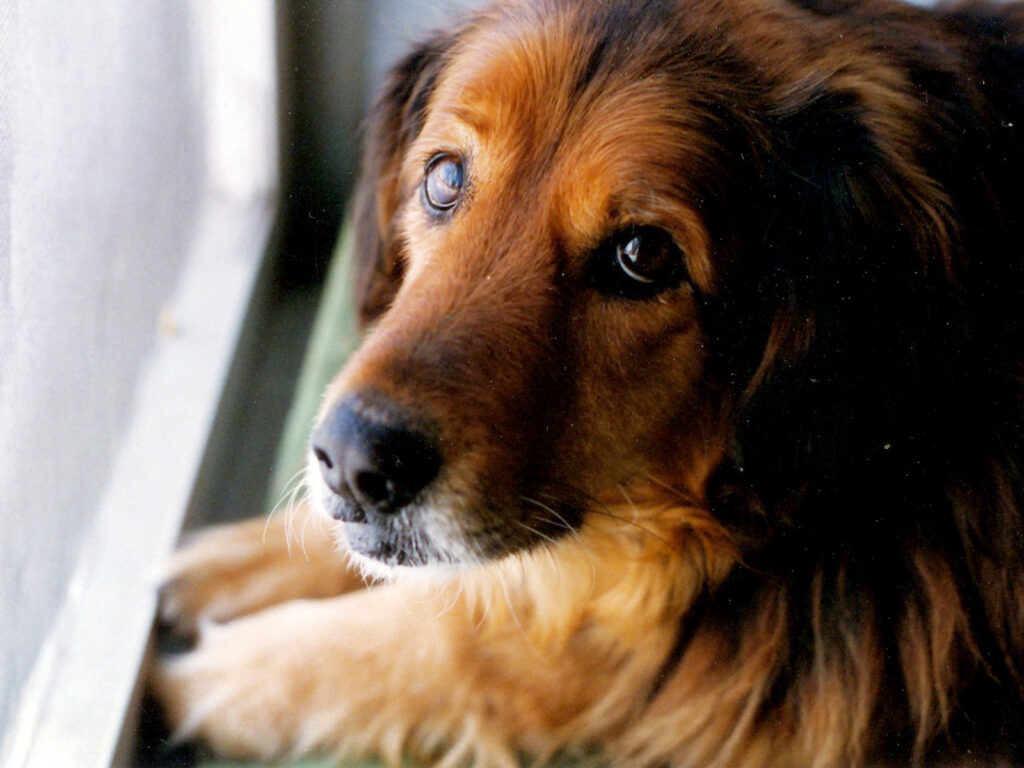
Resources
- The Humane Gardener:
- Gardening among hungry mammals – a plant list of resilient plants!
- Strangers in a strange land – the case against trapping and relocating
- The Humane Society:
- David Suzuki Foundation:
- PBS Nature:(You may need a PBS Passport to access or check at your public library)
